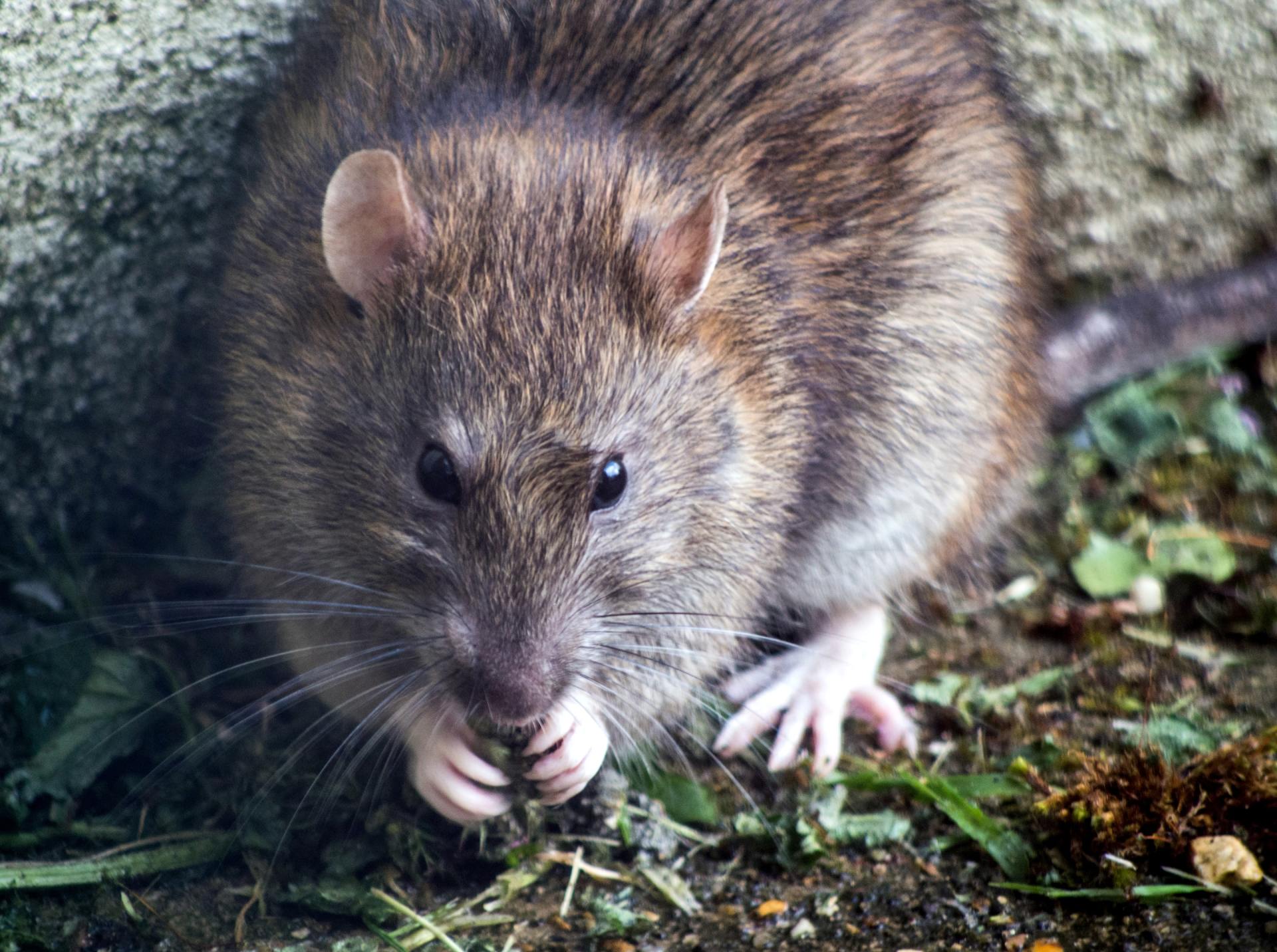Rat Pest Control
Griffin Pest Management provides rat control services for your home or business that are backed by our service guarantee. Our rat exterminators will implement customized treatment plans designed to eliminate rats and prevent them from coming into your property. Our integrated pest management plan will help identify entry points and seal those openings to ensure that rats can no longer gain entry after they have been eliminated. Call today to schedule an inspection! 888-400-9011
Why Do I Have Rats?
Rat Exterminators
Immediate Rat Control
Rat Treatment Options
Inspection
Your pest control service will begin with a licensed technician providing a full inspection of your residence and property to identify the infestation. During the inspection, your pest control technician will identify potential problem areas around your home or office. After the source of your problem areas have been identified, your technician will point out other potential areas rats may nest and will show you the steps you can take to reduce future infestations. Your technician will create a customized rat treatment plan for year-round protection, using the most effective and environmentally conscious rodent control solutions.
Rat Sanitation
There is a distinct odor that comes from rat urine and waste that is unpleasant and attracts other rats. Griffin cleans and disinfects any areas that the rats inhabited to prevent further rat intrusion. We utilize a hospital grade disinfectant that will sanitize and remove any odors that the rats may have left behind.
Rat Traps
Sticky traps and snap traps are both designed to catch rats in areas where they are likely to feed or along their usual paths. These traps are extremely effective when used with the right baits and are designed for easy cleanup and disposal.
Rat Baits
Chemical poisons are strategically placed where rats are likely to be exposed to them in hopes that they consume the bait. While these methods are effective, it is best to have a Griffin technician help with placement of these poison baits to minimize the possibility of a non-target animal consuming the poison or a rat consuming the poison then falling ill and dying within the walls of a home.
Rat Exclusion
A Griffin pest technician will identify and seal all potential entry points into your home to prevent rats from finding access to areas like wall cavities and crawl spaces. Unprotected access points provide rats with the easy access they need to find ways to sources of food within your home or business. That said, if protective barriers are created to block open access points, then rats may decide to move on in their search for food.
Types of Rats
Signs of Rats
- Rat Droppings – Rat poop are small black pellets that are about the size of a grain of rice. They will be concentrated in areas along their path of travel and will build up quickly if not cleaned up.
- Rub Marks – Rats can’t see well so they tend to follow baseboards to stay against walls while traveling. This keeps them from becoming exposed but also leads to greasy looking stains along the base boards.
- Gnawed Areas – Areas that look like they have been gnawed through are generally indicative of rat activity. They can chew through wood, metal, and plastic so no material is safe from rat damage.
- Rat Nests – Nests are found in areas that are undisturbed. Rats will shred soft materials and use the material to create a nest in wall cavities, attics, crawl spaces, etc.
- Rat Holes – Sewer rats are great at digging and will create burrows so they can nest somewhere protected from predators and disturbances. Any signs of holes burrowing next to the foundation of your home or business can be indicative of a rat burrow.
Quick Facts About Rats
Habits
Rats are prolific breeders and can have many litters throughout the year. They often invade homes in search of safe places to breed with nearby sources of food and water. They often infest attics, garages, sheds, dryer vents, cabinets and pantries. They use insulation, wiring, lint, newspapers and garbage to build their nests. Rats can enter a home in a variety of ways. Sometimes they use tree branches or shrubs near the roofline to enter attics. They may also crawl through dryer vents. Rats only need a hole the size of a quarter to gain entry into your home.
Habitat
Norway rats live in fields, farm lands and in structures. Norway Rats are often found in woodpiles. Roof rats can be found in the upper parts of buildings, and can also be found under, in and around structures.
Threats
Norway Rats can chew through wiring, causing fires. Roof rats secured their place in history by spreading the highly dangerous bubonic plague. They support many ectoparasites and urinate on food.
Prevention
To keep rodents out, make sure all holes of larger diameter than a pencil are sealed. Rats can squeeze through holes the size of a quarter. Seal any cracks and voids. Don't overlook proper drainage at the foundation and always install gutters or diverts which will channel water away from the building. Griffin Pest Management offers exclusion service for rodent infestations to keep rodents from returning.


